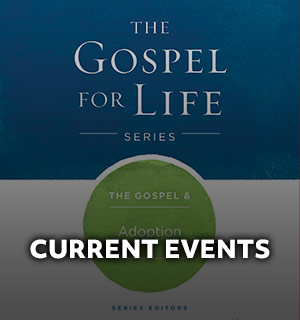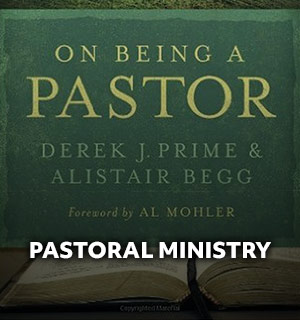
By Ken Braddy
From the moment the country learned that states were going to begin reopening businesses and commerce, the church has been elated that it will be able to gather together again.
Anticipation is high, although concerns remain about just how quickly we can get “back to normal.”
I don’t know of any church leader who is looking to reopen with a “business as usual” mindset. We could rush in where angels fear to tread, but why?
Perhaps we should apply I Corinthians 14:40-43 to our present situation: “Let everything be done decently and in order… since God is not a God of disorder … .”
While the verses refer to orderliness in the worship service, the principle of orderliness can be applied to the church’s return to its facilities.
This is our moment to celebrate our return not just to the campus, but to one another.
As we return to one another on campus and in our Bible study groups, orderliness and thoughtfulness will win the day. We are shepherds of God’s people. As shepherds, one of our chief roles is that of protector.
Shepherds in biblical times had to be prepared to defend the flock against predators and thieves. Shepherds were temporary stewards of their master’s sheep, and we’re no different.
As church leaders, we shepherd God’s people, and a large part of our role is to protect, to anticipate, and to act on behalf of the sheep entrusted to us by God.
To be orderly and not disorderly, let’s think about reopening the church in four phases.
What I am about to suggest won’t work in every church, everywhere. The four phases will make sense in many congregations as-is; others will want and need to tweak them to fit their context.
I encourage you to adjust the four phases below to fit your church. Move items from one phase to another. Move some up, others down. But develop a phase-in plan you and your congregants can accept.
There will be some overlap in the phases below. One phase will prepare the way for the next, but each phase will continue to build on previous ones. Ultimately we will succeed in returning to our church buildings.
I believe ultimately we will be a better church. We’re already reaching more people online in both worship and in Bible study groups; I hear that from leaders all over the country.
We’ve pivoted quickly as the church, and we are learning new ways of ministry.
Small churches, large churches, and every size in between are going to look back on this moment in church history and remember these days; they are days of a paradigm shift that we haven’t seen before.
We will all remember COVID-19 and how it changed us and our churches.
The four phases below may provide a loose framework around which you begin planning for the future.
Make these your own. Listen to the advice from the Center for Disease Control. Look to the leaders of your state and local governments and follow their directions (states and cities will vary, which requires you adjust your phase-in).
Add content. Delete content. Reorganize the phases if you have a better idea. The goal is to “do things decently and in order” and to have a plan that you work as a congregation. Be flexible, and adapt as needed.
Phase 1
Key Focus: Returning to the Church Building
Key Issues in this Phase:
- State and local leaders will set guidelines; states and cities will be different in their approaches and timelines.
- Churches may start with a worship-only strategy for several months.
- Limited worship attendance (100 people at a time?) may be mandated by state and/or local leaders.
- Addition of more worship services to allow for physical distancing may be required.
- Children and preschool ministries may be limited by states for a time; parents take children to “big church.”
- Older volunteers might be hesitant to return before a vaccine is available.
- Doors to the church are propped open to avoid contact with handles.
- Restrooms may remain closed? Some states are already advising this.
- Bulletins aren’t passed out; instead, announcements and information are displayed onscreen.
- Worship centers will be sanitized between services.
- A new way of collecting the offering will have to be considered (boxes placed strategically around the worship center and lobby?).
- Live broadcasts via Facebook Live or other online services continue and are perfected to accommodate those who are not willing to return.
- An overflow room for worshipers may be required; when maximum allowed attendance is reached, send people to the overflow room or ask them to return for the next worship service.
- Church leaders will continue to help parents disciple children in the home.
- Decisions will be made about how to safely administer the Lord’s Supper, baptisms, and the invitation.
- Plans for entering and exiting the building must be developed (one entrance, dismiss by rows, etc.).
- Decide what you’ll do about weddings, use of facilities by outside groups, etc.
- Bible study groups continue to grow in their use of Zoom or other online meeting tools; they return in the next phase.
Phase 2
Key Focus: Groups begin meeting again on campus
Key Issues in this Phase:
- Space: Physical distancing may necessitate the starting of new groups so people can practice physical distancing in smaller spaces; new groups may be started on days besides Sunday in order to have space to meet.
- Additional hours/options for groups to meet (some churches that are out of space will need to begin a second or third hour of Bible study) should be considered prior to this phase.
- Some older workers may take a sabbatical for safety.
- Classrooms must be sanitized at greater levels than ever before.
- Teachers will need new kinds of training to help them learn best practices for sanitizing rooms and children’s toys.
- Some traditional ministries, like VBS, may take place in alternative ways.
- Classroom attendance will be limited to allow physical distancing.
- If children’s church is a ministry that was suspended, decisions will be made about how to practice physical distancing when it resumes.
- Adult and student rooms get tech upgrades (wall-mounted flat screen televisions and appropriate cables will allow groups to use Zoom technology to provide a live experience for group members who are not comfortable coming back to the campus); new people can be reached online, too.
- Creation of special “online only” groups that can be new front doors to people seeking to connect with the church; recruit new teachers who are tech-savvy and enjoy the challenge of leading a virtual group.
Phase 3
Key Focus: Regaining Strength and Ministries
Key Issues:
- People continue to return to worship and Bible study groups; the church continues to have a growing online presence.
- Budget preparation and congregational approval of next fiscal budget occurs; some ministries may have to be cut. Churches will wrestle philosophically about what continues and what ceases.
- Fall festival decision: Can the church host this safely?
- Thanksgiving: Will the church have a fellowship meal if it has in the past? Could this be too early for such a large gathering of people? Consider canceling.
- Christmas: Will there be a need for additional services? Will choirs be able to rehearse in close proximity to present seasonal music, cantatas, etc? How will you prepare families to celebrate Advent and have home worship during December?
- Ministry to struggling families and individuals may increase. Job loss, COVID-19 addictions (alcohol/pornography) may require counseling to help people cope with depression and poor decisions made during the time of physical isolation.
- Benevolence ministry may need additional volunteers to meet needs.
- New Year’s: Hope can be instilled in God’s people to find the brighter tomorrow and cast vision for 2021.
- Be open and transparent with the congregation about any budget shortfalls, cuts, and adjustments.
Phase 4
Key Focus: Celebration
Key Issues:
- Give people hope.
- Look back and celebrate the victories and progress in ministry, outreach, attendance, etc. from May 2020 onward.
- Challenge the congregation to remain flexible and open to new ways of “doing church.”
- Find God’s hand of deliverance and guidance and celebrate His leadership of the church.
- Continue to help moms and dads disciple their children in the home.
- Anticipate and plan for summer ministries such as VBS, camps, mission trips, etc. Talk about them as a church family.
- Things will begin to feel like they are getting back to normal.
- Celebrate increases in worship and Bible study attendance year-over-year. Help the people see the good that has come from COVID-19.
As you can see, these lists are not exhaustive, but representative of things we will all have to decide as we return to the building and reopen the church.
I encourage you to copy and paste these lists into a Word document so you can add and delete phases or items within a phase.
Use this as a starting point for developing a plan for the way you believe God is leading your church to reopen.
KEN BRADDY (@kenbraddy) is the director of Sunday School at Lifeway and disciples a group of adults at his church in Shelbyville, Tennessee. He is the author of several books, including Breathing Life Into Sunday School. He blogs regularly about Sunday school and groups at kenbraddy.com, where this post originally appeared.








